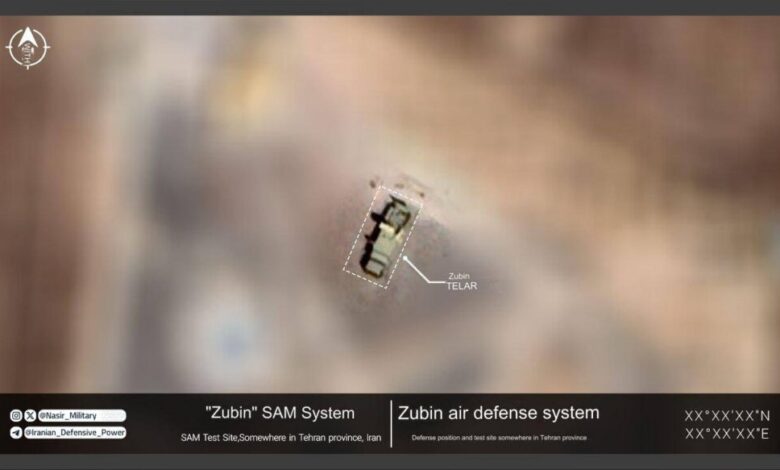Iran Introduces New Air Defense Missile System Similar to Israel’s Iron Dome

Iran has recently deployed the “Zoubin”, a new air defense missile system, showcasing one of its most advanced domestically developed air defense technologies. Known as the “Iranian Iron Dome,” the Zoubin is specifically designed to counter a wide range of low-altitude aerial threats that have become increasingly prevalent in modern warfare. With the system’s deployment around Tehran and other strategic areas, Iran aims to strengthen its defenses against threats like drones, loitering munitions, cruise missiles, artillery shells, low-flying fighter aircraft, and helicopters. This new system reflects Iran’s commitment to self-reliant air defense technology amidst rising tensions and potential aerial incursions.

Built with high tactical mobility, the Iranian-made Zoubin air defense missile system is mounted on a 6×6 truck chassis, allowing for swift repositioning as required by changing threat conditions. This flexibility is coupled with a 360-degree defense capability, which provides broad coverage and adaptability. Citing technical data published by the Iranian defense industry, the Zoubin’s radar is capable of detecting up to 100 targets simultaneously within a 30 km radius and can engage threats within a 20 km range. Each unit is equipped with a vertical-launch canister system holding up to eight missiles, allowing the system to respond to multiple threats at once, a crucial feature in defending against complex, coordinated attacks.

The Zoubin is tailored to address a variety of specific threats. Drones and loitering munitions, increasingly used for both reconnaissance and attack, often approach in swarms or follow erratic paths, making them challenging to intercept. Zoubin’s multi-target tracking and rapid-response features allow it to effectively counter such swarming attacks. Cruise missiles present another major threat due to their low-altitude, high-speed profiles and precision, and Zoubin’s advanced radar and vertical-launch missiles are designed to detect and intercept these missiles before they reach high-value targets. Additionally, the system can target helicopters and low-flying fighter jets, which often attempt to evade radar by flying at low altitudes. Zoubin’s radar and missile engagement range make it particularly effective against these threats, filling a gap that conventional long-range air defense systems might miss.
Further, the Zoubin is capable of intercepting artillery shells and long-range ammunition within its engagement radius. This capability is especially important for protecting fortified or urban areas from precision-guided artillery and other projectiles that adversaries may use in close-range assaults.
Iran’s focus on developing the Zoubin air defense system reflects a strategic emphasis on countering the latest generation of low-altitude and precision aerial threats. Its vertical-launch technology, which builds on the expertise developed with Iran’s long-range Bavar-373 system, and its trailer-mounted design ensure both quick deployment and flexibility. The system has been strategically deployed around Tehran, underscoring Iran’s commitment to defending critical locations against modern threats. In conjunction with Iran’s other air defense platforms, the Zoubin provides a layered approach, enhancing the country’s overall airspace protection.
The Zoubin’s introduction marks a notable advancement in Iran’s defense capabilities. Its robust target-tracking, modular design, and rapid-response features make it a formidable component in Iran’s multi-layered air defense architecture. This system highlights Iran’s ongoing commitment to bolstering its defensive autonomy and protecting its airspace against increasingly sophisticated regional threats.





